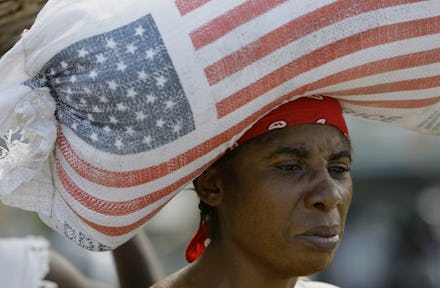Science & Food Aid – It’s in the Bag

In its international development efforts, the US sends more than a billion dollars’ worth of food assistance across the world. America’s food aid shipments sometimes spoil, resulting in food going to waste where it could be most needed. A group of researchers at MIT may have found a way to save over $10 million while feeding thousands of the world’s poorest people.
Shipping agricultural commodities like grains and legumes to the developing world raises considerable challenges for the nation’s food assistance programs. Procurement officials need to know when to ship, where, and when the food is expected to arrive. After all, food can—and all too often does—spoil.
The researchers from MIT’s Comprehensive Initiative on Technology Evaluation have found that much of the loss is potentially preventable. Now, they have embarked on a pilot project to improve the way America aids the world.
For American food aid abroad, officials are faced with a choice between shipping food from the US or purchasing it locally. If they choose to ship the food, the US Agency for International Development (USAID) estimates it loses about one percent of its food aid, or about $10 million annually, due to spoilage, rot, bag breakage, or other factors.
Local producers also suffer from food losses. Farmers in the developing world face pests, poor storage conditions, spillage, and other concerns that lead to a decrease in the quality of their crops if not their entire spoilage. A 2011 World Bank report estimated post-harvest loss in Sub-Saharan Africa—just for grains—exceeded the total value of cereal food aid that the region received over a decade.
The MIT team has come up with a simple solution: update the food’s packaging using science. According to one researcher, Mark E. Brennan, current food shipments have been using the same packaging for decades, largely made out of paper and polypropylene.
Applying new scientific developments to something as simple as food bags has the potential to save food from spoiling while traveling to its destinations. Moreover, new packaging could provide the ability to keep food longer and ship it to other destinations. Put simply, new bags could save USAID money while improving its ability to feed more in the developing world.
The MIT researchers expressly set up their work as an experiment. Working with USAID, the research team shipped $1.5 million worth of crops to South Africa and Djibouti in nine different types of packaging. In the field, they are investigating whether supposedly-better bags actually benefit those most in need. For example, one test led to the design of bags that prevent insects from reproducing, which would mean less damage to crops if bugs found their way into the container. Another test examined whether air-tight containers were punctured in the process of getting onto or off of a ship.
According to MIT’s Brennan, the team is now analyzing its data. “Understanding how different bags work with different commodities in different conditions is one part of the analysis,” says Brennan. “Just as important is evaluating how these bags work within the food aid shipment practices that allow that a million metric tons of food assistance get to where it needs to go every year.”
The study is still ongoing and is supported by USAID’s Global Development Lab. From the preliminary findings presented at academic conferences, the project’s results hold considerable promise as a simple, science-based solution to waste less food, save money, and feed more.